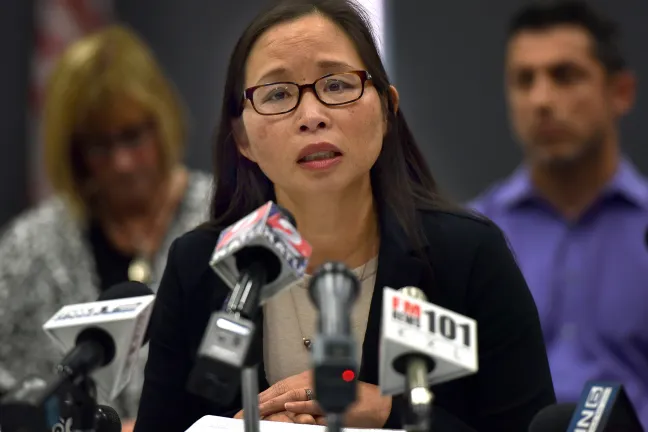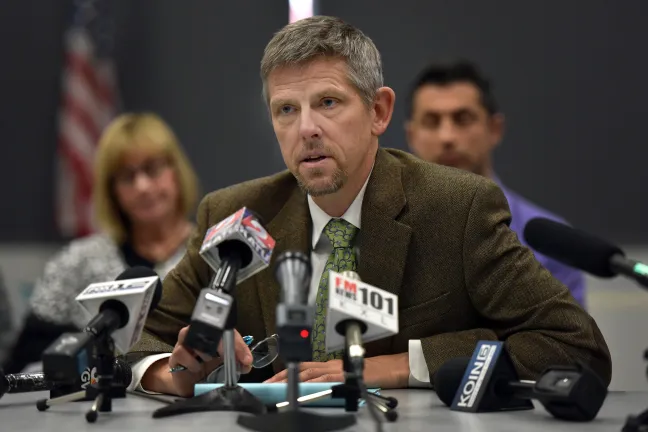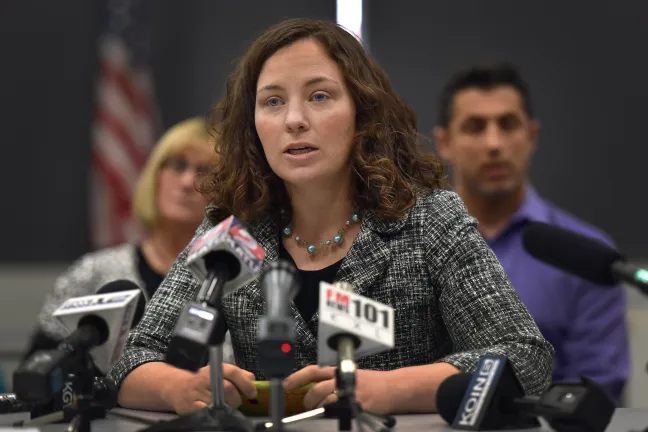Today, Portland metro area hospitals and health providers announced they will adopt community-wide safe opiate prescribing guidelines for treating chronic non-terminal pain. The goal of the new community-wide standards is to help reverse the epidemic of prescription drug overdoses in the Portland metro region.
Oregon has one of the highest opiate prescribing rates in the United States and this rate cannot be explained by health issues that would cause pain. A new
The report also finds that the expanded availability of naloxone, a drug that reverses opiate overdoses, has had a significant impact. Heroin deaths dropped dramatically in 2013 when state law made it possible for lay people to use naloxone. In contrast, deaths from prescription opiates have not decreased and, in 2014, half of all fatal overdoses were associated with these drugs.
Fatalities are just part of a much larger problem that affects many other people who are hospitalized for non-fatal overdose or suffer from addiction.
“Solid scientific data shows that the risk of death is directly related to the dose of drug prescribed,’’ said Dr. Paul Lewis MD, MPH and Tri-County Health Officer for Multnomah,Clackamas and Washington counties. “Last year our colleagues at the Pacific Northwest Evidence-based Practice Center at OHSU found no studies evaluating the effectiveness of long-term opiate treatment for pain, instead they found harm which was worse at higher doses.”
“Chronic pain needs treatment, but high doses of opiates are not the answer,” Lewis said.
Health providers respond with new guidelines
The Portland metro area healthcare community is committed to reversing the prescription opiate epidemic and to providing compassionate care to those suffering from chronic pain.
Beginning in 2014, the Healthy Columbia Willamette Collaborative, a group of county health departments, CCOs and hospitals, worked to develop safe prescribing standards for chronic pain not caused by cancer or terminal conditions.
- In 2015 the group expanded to include professional organizations and free-standing clinics; this larger group refined and finalized the safe prescribing standard. Many major Portland area hospitals, health systems, coordinated care organizations, and Federally Qualified Health Centers participated in developing the standards and are supporting implementation across the region including:
- Adventist Health
- Care Oregon
- Central City Concern
- Clackamas Health Centers
- FamilyCare Health
- HealthShare of Oregon
- Kaiser Permanente
- Legacy Health
- Multnomah County Clinics
- OHSU
- PeaceHealth Southwest Medical Center
- Providence Health & Services
- Tuality Healthcare
- Virginia Garcia Memorial Health Center
Now, the same group is committing to first making sure providers understand the standards, know how to safely decrease unsafe doses, and most importantly to help patients find better ways to live with chronic conditions.
“These prescribing standards will guide providers to more safely and effectively prescribe opiates if they are prescribed at all,’’ said Melissa Weimer, assistant professor, division of general internal and geriatrics at OHSU School of Medicine, and the leader of the workgroup that wrote the new community standard.
One example of a new approach comes from CareOregon. Starting this year, we have increased our support and payment for physical therapy across the CareOregon network and set up a new multidisciplinary pain clinic in Astoria and Medford, ’’ said Amit Shah, CareOregon Senior Medical Director. “CareOregon supported these community-driven clinics so people with chronic pain can have effective, safer treatments,’’ Shah said.
Other community efforts are also underway. Nora Stern, of the Providence Health & Services shares a new approach to chronic pain in this video. And, the Oregon Health Authority has launched a new website for providers and community members on reducing opiate misuse and harm.
Michele Chisholm described the grief delivered by opiate overdose and death of her son, Travis Tan, in July 2011.
"What I learned is that heroin does not discriminate, it touches all families, it doesn't matter where you come from,'' she said.
Out of grief, she said, comes hope. "Hope that naloxone will continue to save lives as it has been, hope that the Good Sam law,that becomes effective i January 2016, will make it easier to call 911, and hope that today's events will bring further awareness of this epidemic so we can continue to work as a community.''
Epidemic from prescription medications remains grim
The Centers for Disease Control and Prevention reports Oregon and the United States are in the midst of self-inflicted epidemic of prescription drug overdoses. Since 2009,more people have been dying of drug overdoses than car crashes. Legal prescription opiate pain pills now kill almost 2 people per hour in the US, more than heroin and cocaine combined. The CDC reports the increase in painkiller prescribing is a key driver in prescription overdoses.
“Prescription drug overdose is epidemic in the United States,’’ said CDC Director Tom Frieden earlier this year. “The treatment is becoming the problem.’’
Opiate Trends Multnomah County, 2004-2014



